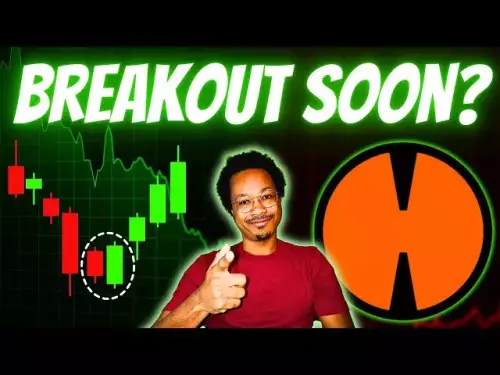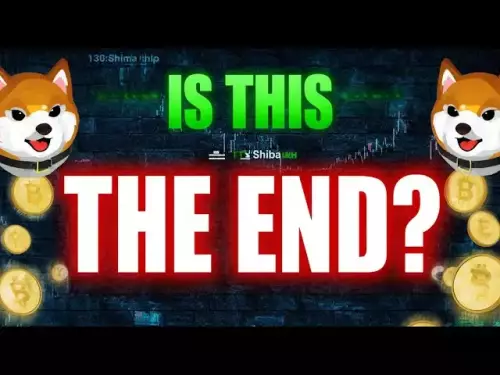-
 bitcoin
bitcoin $113137.862908 USD
0.65% -
 ethereum
ethereum $4107.436072 USD
-1.96% -
 xrp
xrp $2.908808 USD
2.59% -
 tether
tether $1.000294 USD
0.01% -
 bnb
bnb $1010.914842 USD
-1.12% -
 solana
solana $210.653310 USD
-2.16% -
 usd-coin
usd-coin $0.999776 USD
-0.01% -
 dogecoin
dogecoin $0.239360 USD
-0.04% -
 tron
tron $0.337849 USD
0.37% -
 cardano
cardano $0.807698 USD
-0.61% -
 hyperliquid
hyperliquid $45.387447 USD
0.61% -
 chainlink
chainlink $21.408287 USD
-0.92% -
 ethena-usde
ethena-usde $1.000509 USD
-0.04% -
 avalanche
avalanche $32.634682 USD
-4.77% -
 sui
sui $3.349772 USD
-0.19%
The Concepts of Initial Margin and Maintenance Margin
Initial margin is the minimum collateral required to open a leveraged crypto position, acting as a security deposit to manage risk.
Sep 17, 2025 at 04:18 pm

Understanding Initial Margin in Crypto Trading
1. Initial margin refers to the minimum amount of collateral a trader must deposit to open a leveraged position in the cryptocurrency market. This requirement acts as a security deposit, ensuring that traders have skin in the game before entering high-risk trades.
2. In most centralized crypto exchanges offering futures or perpetual contracts, initial margin is expressed as a percentage of the total position size. For example, if an exchange requires a 10% initial margin and a trader wants to open a $10,000 BTC/USDT perpetual contract, they must deposit at least $1,000 in their trading account.
3. The level of initial margin varies depending on the leverage offered. Higher leverage reduces the required initial margin, amplifying both potential gains and losses. A 100x leverage option, common in some derivatives platforms, demands only 1% initial margin but significantly increases liquidation risk.
4. Traders often use stablecoins like USDT or USDC as initial margin, though some platforms accept native tokens such as BTC or ETH. When volatile assets are used as collateral, their fluctuating value can affect the overall margin health of the position.
Failure to meet initial margin requirements prevents the execution of a new leveraged trade, making it a gatekeeper for risk exposure in crypto derivatives markets.The Role of Maintenance Margin in Position Sustainability
1. Maintenance margin is the minimum equity a trader must maintain in their account to keep an open leveraged position active. It is typically lower than the initial margin and serves as a threshold below which the position risks liquidation.
2. If the value of a trader’s position declines due to adverse price movements, their account equity drops. Once this equity falls below the maintenance margin level, the exchange triggers a margin call or automatically liquidates the position to prevent further losses.
3. For instance, if a platform sets the maintenance margin at 5% for a $10,000 position, the trader must keep at least $500 worth of equity in the account. Should the balance dip below this mark due to price volatility, the system initiates liquidation procedures.
4. Different exchanges implement varying maintenance margin rates based on asset volatility and liquidity. Highly volatile altcoins usually carry higher maintenance margins compared to major cryptocurrencies like Bitcoin or Ethereum.
Maintenance margin acts as a real-time safeguard for both traders and exchanges, minimizing the chance of negative balances and systemic risk within the trading ecosystem.Margin Mechanics in Decentralized Derivatives Platforms
1. Decentralized finance (DeFi) protocols such as dYdX or GMX have redefined how initial and maintenance margins function by removing intermediaries. These platforms use smart contracts to enforce margin rules algorithmically.
2. On-chain monitoring ensures that positions are continuously evaluated against margin thresholds. When a user’s margin ratio breaches the maintenance level, decentralized oracles report the state, and liquidators execute the liquidation via incentive-based mechanisms.
3. Unlike traditional exchanges, DeFi platforms often allow users to choose different collateral types, including LP tokens or yield-bearing assets. However, these choices may come with higher maintenance margin requirements due to embedded impermanent loss or protocol-specific risks.
4. Flash loans can be exploited to manipulate short-term price feeds and trigger artificial liquidations, making the robustness of maintenance margin calculations critical in decentralized environments.
The transparency and automation of margin enforcement in DeFi increase trust but also demand greater user awareness of smart contract behavior and oracle reliability.Frequently Asked Questions
What happens when a position gets liquidated?When a leveraged position falls below the maintenance margin level, the exchange or protocol forcibly closes the trade. The trader loses their remaining margin, and in some cases, may face additional fees or penalties depending on the platform's structure.
Can I add more funds to avoid liquidation?Yes, most platforms allow users to increase their margin balance during active trades. Depositing additional collateral after a price drop can raise the account equity above the maintenance threshold, preventing automatic liquidation.
How do exchanges determine margin percentages?Exchanges analyze historical volatility, trading volume, and liquidity depth when setting initial and maintenance margin levels. Assets with unpredictable price swings generally require higher margin buffers to mitigate default risk.
Disclaimer:info@kdj.com
The information provided is not trading advice. kdj.com does not assume any responsibility for any investments made based on the information provided in this article. Cryptocurrencies are highly volatile and it is highly recommended that you invest with caution after thorough research!
If you believe that the content used on this website infringes your copyright, please contact us immediately (info@kdj.com) and we will delete it promptly.
- Maxi Doge: The Meme Coin Primed to Explode in 2025?
- 2025-09-26 04:45:12
- Solana Price Wobbles, Chainlink Forecasts Steady Gains, While Altcoins Promise 10x Returns
- 2025-09-26 05:05:14
- Crypto Market Carnage: Altcoins Face a Massive Downturn – What's a New Yorker to Do?
- 2025-09-26 04:45:12
- Crypto Tokens, Investment, and Potential Gains: What's Hot Right Now?
- 2025-09-26 04:50:12
- MAGAX, Pengu, Little Pepe, LBRETT: Navigating the Meme Coin Frenzy
- 2025-09-26 04:50:12
- Ohio, Bitcoin, and Payments: A New Era for the Buckeye State?
- 2025-09-26 05:25:12
Related knowledge

How do I enable the "scalping-only" mode for Cardano (ADA) contracts?
Sep 24,2025 at 03:19am
Understanding Scalping Strategies in Crypto Derivatives1. Scalping in cryptocurrency trading refers to executing multiple short-term trades within min...

What is the maximum position limit for Cardano (ADA) contracts?
Sep 23,2025 at 11:00pm
Understanding ADA Futures and Derivatives Market Structure1. Cardano (ADA) futures contracts are offered by several major cryptocurrency derivatives e...

How can I view open interest in Cardano (ADA) contracts?
Sep 24,2025 at 07:36am
Understanding Open Interest in Cardano Derivatives1. Open interest refers to the total number of outstanding derivative contracts, such as futures or ...

What is the function of the insurance fund in Cardano (ADA) contracts?
Sep 24,2025 at 02:18am
Understanding the Role of Insurance Funds in Cardano Smart Contracts1. The insurance fund within Cardano's ecosystem is not a native feature directly ...

How can I view historical transaction records for Cardano (ADA) contracts?
Sep 24,2025 at 04:01pm
Understanding Cardano's On-Chain Data Structure1. Cardano operates on a proof-of-stake blockchain that records all transactions in blocks secured thro...

How is the funding rate charged for Cardano (ADA) contracts?
Sep 24,2025 at 07:19am
Funding Rate Mechanism for Cardano (ADA) Perpetual Contracts1. The funding rate in Cardano perpetual contracts serves as a mechanism to align the pric...

How do I enable the "scalping-only" mode for Cardano (ADA) contracts?
Sep 24,2025 at 03:19am
Understanding Scalping Strategies in Crypto Derivatives1. Scalping in cryptocurrency trading refers to executing multiple short-term trades within min...

What is the maximum position limit for Cardano (ADA) contracts?
Sep 23,2025 at 11:00pm
Understanding ADA Futures and Derivatives Market Structure1. Cardano (ADA) futures contracts are offered by several major cryptocurrency derivatives e...

How can I view open interest in Cardano (ADA) contracts?
Sep 24,2025 at 07:36am
Understanding Open Interest in Cardano Derivatives1. Open interest refers to the total number of outstanding derivative contracts, such as futures or ...

What is the function of the insurance fund in Cardano (ADA) contracts?
Sep 24,2025 at 02:18am
Understanding the Role of Insurance Funds in Cardano Smart Contracts1. The insurance fund within Cardano's ecosystem is not a native feature directly ...

How can I view historical transaction records for Cardano (ADA) contracts?
Sep 24,2025 at 04:01pm
Understanding Cardano's On-Chain Data Structure1. Cardano operates on a proof-of-stake blockchain that records all transactions in blocks secured thro...

How is the funding rate charged for Cardano (ADA) contracts?
Sep 24,2025 at 07:19am
Funding Rate Mechanism for Cardano (ADA) Perpetual Contracts1. The funding rate in Cardano perpetual contracts serves as a mechanism to align the pric...
See all articles










































































